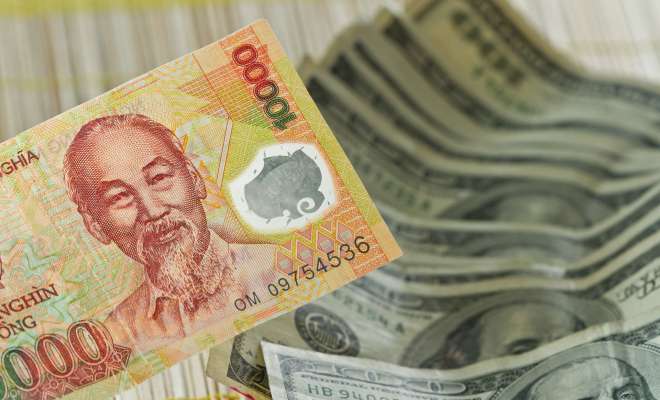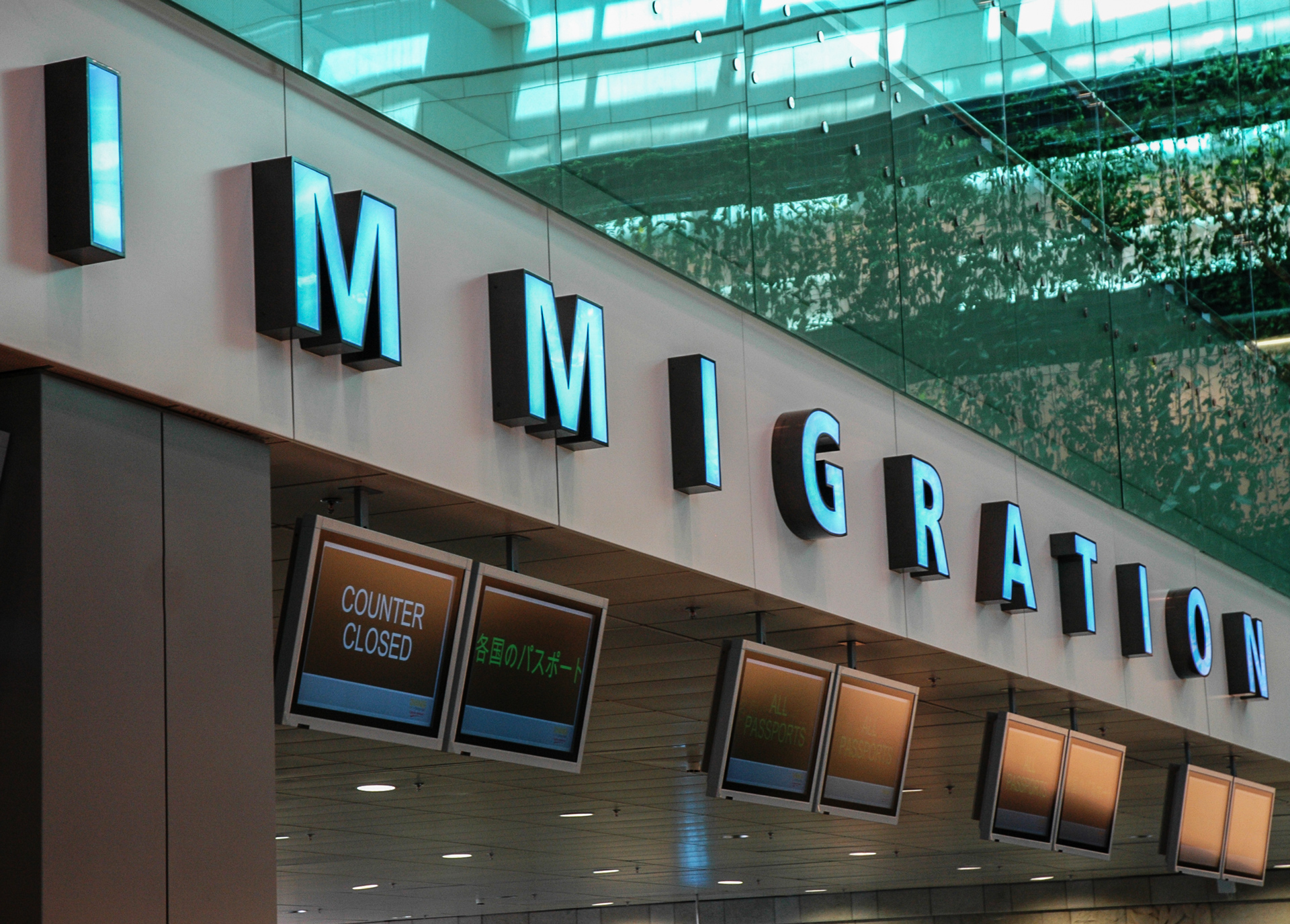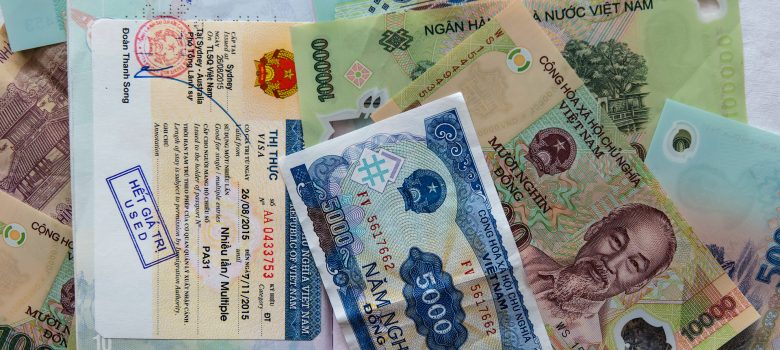Vietnam visas & passports
The rules around visa requirements to enter Vietnam and fees for obtaining different types of visas are constantly changing.
We recommend that ALL travelers contact their Vietnamese embassy or consulate to get the latest information and updates. The Vietnamese embassy or consulate websites in each country generally have up to date information as well as application forms.
As a general rule, most visitors must obtain a visa to enter Vietnam. However, as of December 2020, the holders of passports from 24 countries do not require a tourist visa for single entry into Vietnam, for the allotted number of days, including:
- Malaysia; less than 30 days
- Singapore; less than 30 days
- Thailand; less than 30 days
- Philippines; less than 21 days
- Denmark; less than 15 days
- Finland; less than 15 days
- France; less than 15 days
- Germany; less than 15 days
- Italy; less than 15 days
- Japan; less than 15 days
- Norway; less than 15 days
- Russia; less than 15 days
- South Korea; less than 15 days
- Spain; less than 15 days
- Sweden; less than 15 days
- United Kingdom; less than 15 days. However, British National Overseas (BNO) passport holders are not eligible for the 15-day free visa exemption.
For a stay of more than the allowed times above, citizens are required to apply for a 3-month single/multiple entry visa — like everyone else.
There is also a partial exemption for travel to Phu Quoc Island — a popular tourist spot in the Gulf of Thailand, in the south of Vietnam, off the coast of Cambodia. It is known for white-sand beaches and resorts, and has been designated a Special Economic Zone.
Foreign passports holders are exempt from visa requirements for travel to Phu Quoc island for up to 30 days. If they transit through other international airports in Vietnam before arriving Phu Quoc, they are still eligible for the exemption. However, any travel to Vietnam beyond Phu Quoc is subject to normal visa requirements.
In addition, APEC Business Travel Card (ABTC) holders with valid passports are exempt from Vietnam visa requirements for stays of no longer than 60 days.
Tourist visa types
There are three types of tourist visas:
- a ‘standard-process’ visa obtained from a Vietnamese embassy or consulate outside of Vietnam, normally in your own country
- an e-visa, involving a simple, online visa approval process
- a visa obtained at the international airport on arrival in Vietnam (VOA)
Once issued, the e-visa and the VOA visa are exactly the same as the standard-process visa issued by any Vietnamese embassy/consulate, with the same limitations and conditions attached to their use.
Online e-visas are increasingly popular because they are easy, online payment by card is accepted, and they are accepted at most Vietnamese international airports, seaports and border crossings.
At the time of this writing (October 2021), the situation with e-visas remains very fluid.
Prior to the COVID pandemic, the e-visa took three working days to process, costs 25 USD, and is a single-entry visa, valid for 30 days. Visitors from a list of 80 countries could enter Vietnam on an e-visa at any of the country’s eight international airports, including Hanoi, Ho Chi Minh City and Danang, as well as 14 land crossings and seven seaports.
However, due to the changing nature of COVID restrictions, travelers should check for up to date information on which entry points accept e-visas.
Note that, as of October 2021, the Vietnamese Government has stopped issuing e-visas for foreigners who are in or have recently visited areas where Covid-19 is spreading. It is not known when e-visas will become widely available again.
See here for a list of the countries where you could, pre-COVID, apply online for an e-visa.
Click here for more details and procedures on getting an e-visa.
Once your e-visa has been emailed to you, upon arrival in Vietnam, you just have to submit your passport and your printed e-visa at the immigration counter, avoiding the possible hassle of having to queue up at the visa on arrival counter.
The visa on arrival (VOA) only applies to arrival at the international airports of Ho Chi Minh, Da Nang or Hanoi. All other entry points require a standard-process visa or e-visa.
Most tourists get a single-entry DL (which stands for “Du Lich”, which means ‘tourist’) category visa valid for 30 days from the date of arrival.
If you are likely to cross back and forth between Vietnam, Laos, Cambodia or China, then a multiple-entry visa valid for 30 days from the date of arrival is generally the next least expensive option.
You can also apply for single or multiple entry 3-month visas, which in practice turn out to be a little less than 90 days. You can apply for a visa from 6 months in advance of your date of departure. Your passport must be valid for at least 6 months beyond the last date of the visa (Vietnamese law requires only 1 month but many airlines require 6).
Children over 14 years with their own passport follow the same procedures; for younger children, parents sign the application forms on their behalf.
Visa fees vary from one country to another and also by visa type — a typical standard-process single-entry 30-day visa is less expensive than a longer multi-entry visa; and there are also different fees payable for VOA visas.
In recent years, the Vietnamese government has been reducing many visa fees to help stimulate the tourism industry.
We recommend you check with your Vietnamese embassy or consulate to get the latest fees. Note that fees are often only payable in cash, money order, or check at the embassy or consulate, with credit / debit cards often not accepted.
For VOA visas, often the only payment accepted for a visa at the arrival airport is US dollars cash. If you are getting a VOA visa, is is important that you have the exact fee in US dollars cash before you arrive as there may be no way to get US cash after arrival at the airport and the visa officials may decide not to accept other currencies!

The VOA process consists of two steps.
First, you employ an agent (before you arrive) in Vietnam to obtain an official letter of approval from the Vietnamese dept of immigration.
Second, you present the letter of approval, together with two passport photos and the visa fee in US dollars cash, at the VOA counter at the international airport on arrival, before you go through passport control / immigration, and get a suitable visa put into your passport.
Then it’s the usual process of passport control on the way to picking up your bags and going through customs. Agent fees can vary from around $9 up.
As with the e-visa, the advantage of the VOA visa is that it avoids queues at your Vietnamese embassy or consulate, and that overall it can be less expensive than the standard-process visa. Also, if you are traveling to Vietnam at very short notice, it might be your only choice.
However, the standard-process times are not that long and if you give yourself sufficient time before you leave, then you can avoid queues at the embassy or consulate by using online applications and a courier or registered mail to get your passport to the consulate and back.
Also, the ongoing reduction in visa fees by the Vietnamese government is reducing any fee advantage of the VOA process.
In addition, there can be long queues (and general chaos) at the VOA counter at the airport if you arrive just behind a large group who are also getting VOA visas, especially if some of them have forgotten their required passport photos and / or their US dollars cash.
Although the whole process can be smooth and quick, delays of more than an hour are not that uncommon in high season. If you’ve lived through that, wondering if you will catch your connecting domestic flight, you are likely to think twice before getting a VOA visa another time!
While there are many reputable agents for obtaining the letter of approval for a VOA visa, there are also many scams and dubious web sites purporting to be official visa sites or sites that can get you an official visa.
The only official authority in each country is the Vietnamese embassy / consulate, and you should exercise care in selecting an agent.
Our view is that if you can do so, it is probably better to get an e-visa or standard-process visa before you leave for Vietnam, and avoid the potential hassles of VOA queues.
Immigration & customs

Thanks to policies to promote tourism, customs regulations in Vietnam today are becoming simpler. However, as a sensible visitor, you should be aware of what you can and cannot bring to and from Vietnam, and arrange any required documentation.
What you can bring in
Visitors are permitted to carry up to the following maximum limits without having to declare the items or pay import taxes:
- Cigarettes: 400
- Cigars: 100
- Tobacco: 100 grams
- Liquor: 1.5 litres
- Perfume and jewelry for personal use
- Souvenirs and gift items valued at not more than US $300
Prohibited items include the usual things – but also a few that are more specific to Vietnam (note the last two items):
- Weapons, ammunition, explosives and flammable objects
- Military technical equipment
- Drugs, opium and other narcotics
- Anti-government literature, pornographic literature, etc.
- Video tapes and CDs may be taken away for screening for prohibited or undesirable content and then returned to you after a few days (or kept)
Drug penalties are severe in Vietnam — just don’t bring anything with you, even if legal in your own country.
Passenger declaration cards; taking things home
Passenger arrival & departure declaration cards are no longer required for all visitors at all international airports and 12 border crossing checkpoints – instead, there are bag x-rays and various checks.
Don’t break the regulations in terms of what you can bring into Vietnam with you – it’s not worth it.
In terms of taking things home with you after your trip, note that antiques of any significance, some types of precious stones, wild animals, and rare & precious plants listed in Vietnam’s red-book cannot be exported.
Often, when you see antiques for sale, they are reproductions not originals, and taking them out of the country is OK. If they are convincing reproductions, get the seller to give you a document, or state in the customs declaration if being shipped that they are not originals.
If you are buying what you believe are originals, then make sure you get documentation saying they can be exported, and that any shipping documentation states so too. Use your common sense.
Please note that this is only a brief summary and that customs regulations in Vietnam are subject to change at any time. So always double check all information before making any important decisions.

